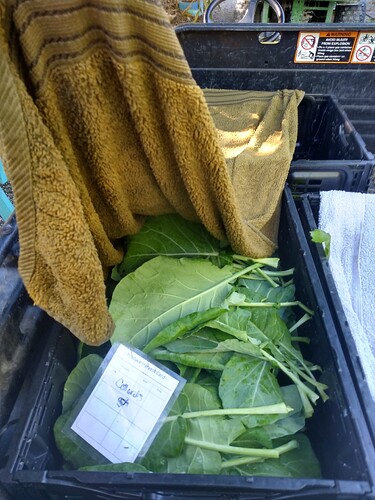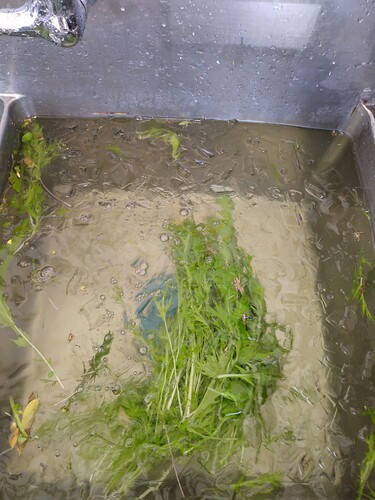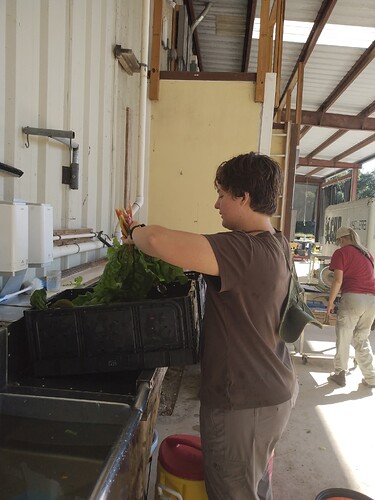How do you all harvest your leafy annual greens in hot climates?
At the ECHO North America RIC, we have been using these techniques on hot days to keep our greens from wilting right away, thereby keeping them fresh for sale at our produce stand and for foodbank donation.
In the Field: We will take small chest coolers into the field with us - they contain towels, ice, and water. The crates that the greens are places into will be immediately covered with a cold wet towel and placed back on the vehicle.
At the Processing Area: After filling our vehicle with crates, we will return to our processing area where the following steps are taken:
-
Greens are dunked in cool water to briefly rinse off dirt (this is not a thorough cleanse; we still encourage our customers to always wash their vegetables once at home).
-
Next, the same greens will be taken out of the rinse water and plunged into a sink full of ice and water for 30 seconds to 2 minutes depending on the thickness of the green. For example, collard greens can stay in the ice for over a minute, but mizuna can barely even take 30 seconds. If you leave them in too long, you’ll begin to see water and cold damage on the leaves. I can share pictures in a future reply.
-
The next step is to gently fling the water off the greens. This is done with one smooth motion so as not to break the greens, but also get rid of excess water quickly.
-
Finally, we sort the produce into 3 streams: 1.) produce that goes to our weekend produce stand at the NARIC Welcome and Resource Center, 2.) what goes to our partner, Cultivate Abundance for their food distribution service at Mision Peniel in Immokalee, FL, 3.) any produce that our hospitality coordinator needs for trainings and events that happen at the office. Anything that is not used immediately is stored in our cold storage trailer which uses the Coolbot system and an old AC Unit in approximately 44 degrees F.
What do you all do in hot places to harvest greens efficiently and effectively? I am always looking for ways to improve this system and teach our interns best practices that our network members are using. These practices use a good amount of water and require ice (which can be difficult to source in many contexts), so methods that use less water/ice would be especially helpful for my learning. Please reply below!



